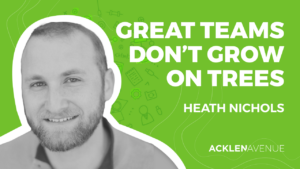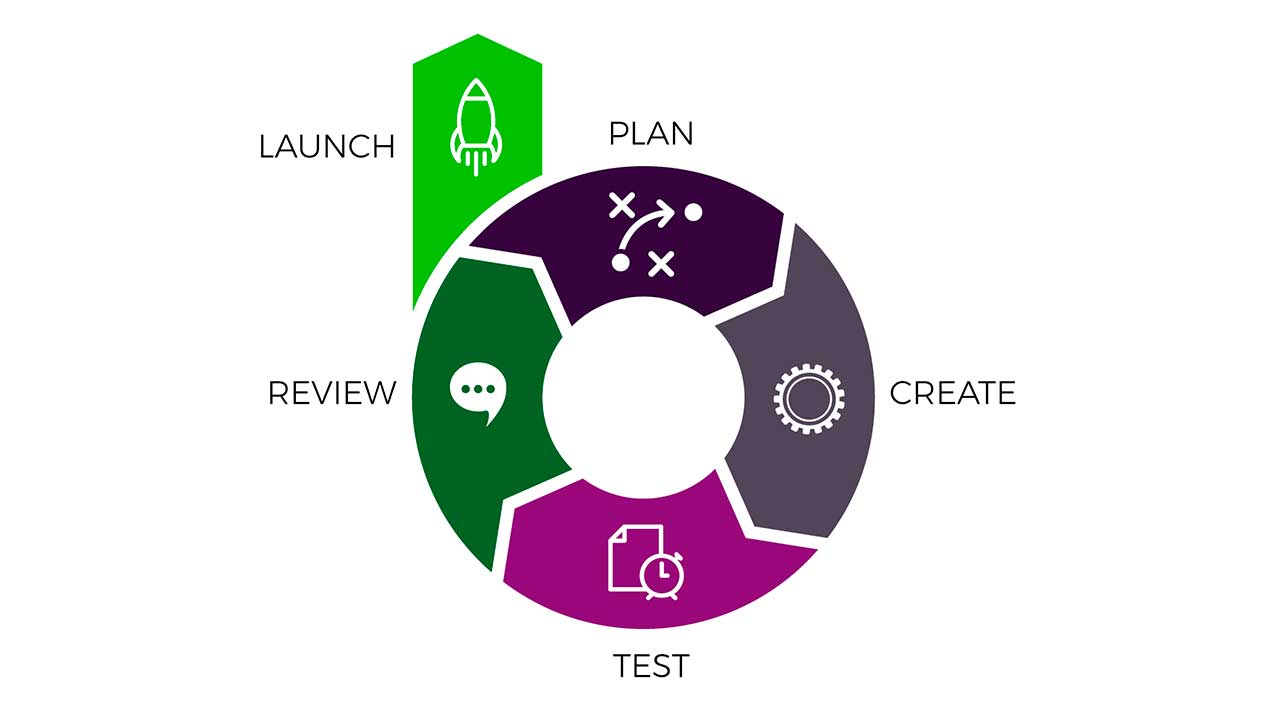
May 5, 2023
Great Teams Don’t Grow On Trees
April 19, 2017

Share:
This is a first in a blog series devoted to Agile Development. We’ll cover everything from a conceptual overview to the granular details.
Agile (adjective) 1. The ability to move quickly and easily
If there is one word that is misused or overused in tech culture today, “agile” is it (though “the Uber of the __ industry” is certainly a contender). It sounds like a responsive, startup-y thing to be, and even those who have no idea what it means have a vague sense that it’s positive.
We want to take “agile” from misuse to clarity, from greyed out to full-color. We love agile, and we think you should too.
Agile practices get users from idea to revenue as fast as possible, while providing greater validation to your roadmap, maintaining high product quality, and not overworking your team. This is accomplished by focusing on small slices of work that are the most critical to the success of the much larger vision.
These small slices are built, tested, and put into users’ hands so that they can learn what works and what doesn’t. To appropriate a wise quotation on design specifically, “No design ever withstood its first encounter with real users.”
For example: Remember when Facebook’s (sorry, THE Facebook) functionality was that, as this screenshot shows, you can “search for people at your school, find out who are in your classes, look up your friends’ friends, and see a visualization of your social network”? Because by the way, it was only available to college students?
While Mark Zuckerberg obviously is a visionary who went on to change the world, he focused on a relatively specific feature set and let the market and user feedback inform the roadmap.
This is the benefit of focusing on small, critical slices. As much as you think you know exactly what you want, at the beginning of any project, you stand at the Point of Maximum Ignorance. Why would you invest a day more than you have to without testing and validating and watching your users play with your product?
For additional context, the opposite of agile methodology is waterfall, which demands that you prepare all the requirements for your product in great detail prior to starting development. This seems like it would make a project less risky due to the extensive thought and planning put into it, but its actual effect is that the product is far more likely to fail. We’ll get deeper into that discussion in future posts.
So, we’ve given you a taste of why agile works for product and software development and where it was born. But the deep principles it relies on are far-reaching in their understanding of humans and our beautiful brains.
Small-slicing any project in the beginning frees the brain from feeling overwhelmed by scale before you’ve even begun.
Defining that small slice clearly when the time is appropriate (and not before) frees you from feeling obligated to know everything you’ll ever need to know, or anxious because you know that you don’t know. At the beginning, you don’t even know what you don’t know. Point of Maximum Ignorance, remember?
Categorizing small pieces of work as ‘done’ on a regular cadence gives the brain the positive affirmation it needs to stay engaged and rewarded. There’s a reason we love checking things off to-do lists!
We haven’t even scratched the surface of how to capture the value that agile offers. For right now, we want to whet your appetite and get you excited about what agile can mean for your company, or for that matter, for your personal habits and goals, your nonprofit, your parenting, your school, your church, and much more.
Download our infographic to see what agile looks like in the real world.